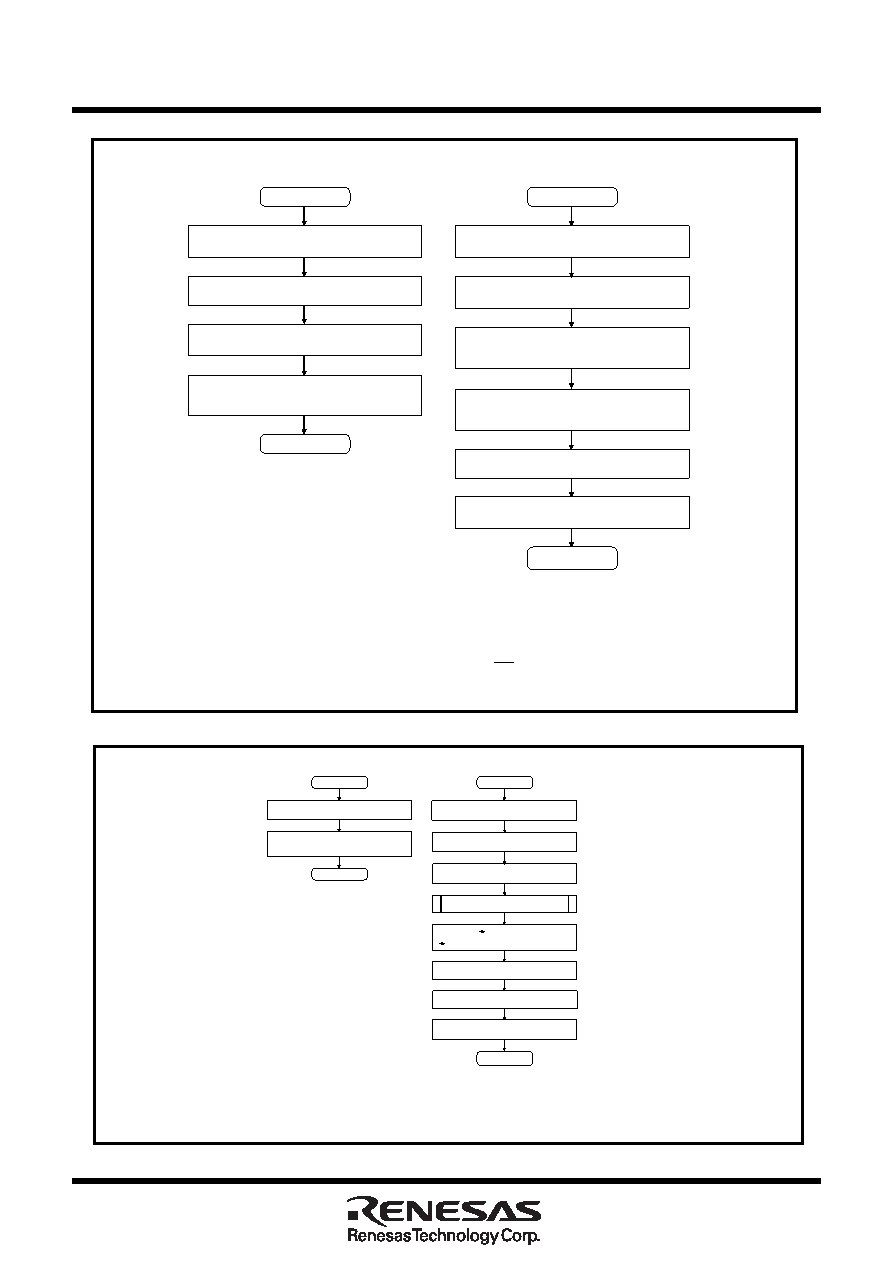- 您現(xiàn)在的位置:買賣IC網(wǎng) > PDF目錄45017 > M30622MGN-XXXGP 16-BIT, MROM, 16 MHz, MICROCONTROLLER, PQFP100 PDF資料下載
參數(shù)資料
| 型號(hào): | M30622MGN-XXXGP |
| 元件分類: | 微控制器/微處理器 |
| 英文描述: | 16-BIT, MROM, 16 MHz, MICROCONTROLLER, PQFP100 |
| 封裝: | 14 X 14 MM, 0.50 MM PITCH, PLASTIC, LQFP-100 |
| 文件頁(yè)數(shù): | 109/248頁(yè) |
| 文件大?。?/td> | 3871K |
| 代理商: | M30622MGN-XXXGP |
第1頁(yè)第2頁(yè)第3頁(yè)第4頁(yè)第5頁(yè)第6頁(yè)第7頁(yè)第8頁(yè)第9頁(yè)第10頁(yè)第11頁(yè)第12頁(yè)第13頁(yè)第14頁(yè)第15頁(yè)第16頁(yè)第17頁(yè)第18頁(yè)第19頁(yè)第20頁(yè)第21頁(yè)第22頁(yè)第23頁(yè)第24頁(yè)第25頁(yè)第26頁(yè)第27頁(yè)第28頁(yè)第29頁(yè)第30頁(yè)第31頁(yè)第32頁(yè)第33頁(yè)第34頁(yè)第35頁(yè)第36頁(yè)第37頁(yè)第38頁(yè)第39頁(yè)第40頁(yè)第41頁(yè)第42頁(yè)第43頁(yè)第44頁(yè)第45頁(yè)第46頁(yè)第47頁(yè)第48頁(yè)第49頁(yè)第50頁(yè)第51頁(yè)第52頁(yè)第53頁(yè)第54頁(yè)第55頁(yè)第56頁(yè)第57頁(yè)第58頁(yè)第59頁(yè)第60頁(yè)第61頁(yè)第62頁(yè)第63頁(yè)第64頁(yè)第65頁(yè)第66頁(yè)第67頁(yè)第68頁(yè)第69頁(yè)第70頁(yè)第71頁(yè)第72頁(yè)第73頁(yè)第74頁(yè)第75頁(yè)第76頁(yè)第77頁(yè)第78頁(yè)第79頁(yè)第80頁(yè)第81頁(yè)第82頁(yè)第83頁(yè)第84頁(yè)第85頁(yè)第86頁(yè)第87頁(yè)第88頁(yè)第89頁(yè)第90頁(yè)第91頁(yè)第92頁(yè)第93頁(yè)第94頁(yè)第95頁(yè)第96頁(yè)第97頁(yè)第98頁(yè)第99頁(yè)第100頁(yè)第101頁(yè)第102頁(yè)第103頁(yè)第104頁(yè)第105頁(yè)第106頁(yè)第107頁(yè)第108頁(yè)當(dāng)前第109頁(yè)第110頁(yè)第111頁(yè)第112頁(yè)第113頁(yè)第114頁(yè)第115頁(yè)第116頁(yè)第117頁(yè)第118頁(yè)第119頁(yè)第120頁(yè)第121頁(yè)第122頁(yè)第123頁(yè)第124頁(yè)第125頁(yè)第126頁(yè)第127頁(yè)第128頁(yè)第129頁(yè)第130頁(yè)第131頁(yè)第132頁(yè)第133頁(yè)第134頁(yè)第135頁(yè)第136頁(yè)第137頁(yè)第138頁(yè)第139頁(yè)第140頁(yè)第141頁(yè)第142頁(yè)第143頁(yè)第144頁(yè)第145頁(yè)第146頁(yè)第147頁(yè)第148頁(yè)第149頁(yè)第150頁(yè)第151頁(yè)第152頁(yè)第153頁(yè)第154頁(yè)第155頁(yè)第156頁(yè)第157頁(yè)第158頁(yè)第159頁(yè)第160頁(yè)第161頁(yè)第162頁(yè)第163頁(yè)第164頁(yè)第165頁(yè)第166頁(yè)第167頁(yè)第168頁(yè)第169頁(yè)第170頁(yè)第171頁(yè)第172頁(yè)第173頁(yè)第174頁(yè)第175頁(yè)第176頁(yè)第177頁(yè)第178頁(yè)第179頁(yè)第180頁(yè)第181頁(yè)第182頁(yè)第183頁(yè)第184頁(yè)第185頁(yè)第186頁(yè)第187頁(yè)第188頁(yè)第189頁(yè)第190頁(yè)第191頁(yè)第192頁(yè)第193頁(yè)第194頁(yè)第195頁(yè)第196頁(yè)第197頁(yè)第198頁(yè)第199頁(yè)第200頁(yè)第201頁(yè)第202頁(yè)第203頁(yè)第204頁(yè)第205頁(yè)第206頁(yè)第207頁(yè)第208頁(yè)第209頁(yè)第210頁(yè)第211頁(yè)第212頁(yè)第213頁(yè)第214頁(yè)第215頁(yè)第216頁(yè)第217頁(yè)第218頁(yè)第219頁(yè)第220頁(yè)第221頁(yè)第222頁(yè)第223頁(yè)第224頁(yè)第225頁(yè)第226頁(yè)第227頁(yè)第228頁(yè)第229頁(yè)第230頁(yè)第231頁(yè)第232頁(yè)第233頁(yè)第234頁(yè)第235頁(yè)第236頁(yè)第237頁(yè)第238頁(yè)第239頁(yè)第240頁(yè)第241頁(yè)第242頁(yè)第243頁(yè)第244頁(yè)第245頁(yè)第246頁(yè)第247頁(yè)第248頁(yè)

CPU Rewrite Mode (Flash Memory Version)
196
Mitsubishi microcomputers
M16C / 62N Group
SINGLE-CHIP 16-BIT CMOS MICROCOMPUTER
End
Start
Execute read array command or reset flash
memory by setting flash memory reset bit (by
writing “1” and then “0” in succession) (Note 3)
Single-chip mode, memory expansion
mode, or boot mode
Set processor mode register (Note 1)
Using software command execute erase,
program, or other operation
(Set lock bit disable bit as required)
Jump to transferred control program in RAM
(Subsequent operations are executed by control
program in this RAM)
Transfer CPU rewrite mode control
program to internal RAM
(Boot mode only)
Write “0” to user ROM area select bit (Note 4)
Write “0” to CPU rewrite mode select bit
(Boot mode only)
Set user ROM area select bit to “1”
Set CPU rewrite mode select bit to “1” (by
writing “0” and then “1” in succession)(Note 2)
*1
Program in ROM
Program in RAM
Note 1: During CPU rewrite mode, set the BCLK as shown below using the main clock divide ratio select bit (bit 6
at address 000616 and bits 6 and 7 at address 000716):
6.25 MHz or less when wait bit (bit 7 at address 000516) = “0” (without internal access wait state)
10.0 MHz or less when wait bit (bit 7 at address 000516) = “1” (with internal access wait state)
Note 2: For CPU rewrite mode select bit to be set to “1”, the user needs to write a “0” and then a “1” to it in
succession. When it is not this procedure, it is not enacted in “1”. This is necessary to ensure that no
interrupt or DMA transfer will be executed during the interval. Write to this bit only when executing out of
an area other than the internal flash memory. Also only when NMI pin is “H” level.
Note 3: Before exiting the CPU rewrite mode after completing erase or program operation, always be sure to
execute a read array command or reset the flash memory.
Note 4: “1” can be set. However, when this bit is “1”, user ROM area is accessed.
Figure 1.29.2. CPU rewrite mode set/reset flowchart
Figure 1.29.2b. Shifting to the low power dissipation mode flowchart
End
Start
XIN oscillating
Transfer the program to be executed in the low
power dissipation mode, to the internal RAM.
Switch the count source of BCLK.
XIN stop. (Note 2)
Jump to transferred control program in RAM
(Subsequent operations are executed by control
program in this RAM)
Note 1: For flash memory reset bit to be set to “1”, the user needs to write a “0” and then a “1” to it in succession.
When it is not this procedure, it is not enacted in “1”. This is necessary to ensure that no interrupt or DMA
transfer will be executed during the interval.
Note 2: Before the count source for BCLK can be changed from XIN to XCIN or vice versa, the clock to which
the count source is going to be switched must be oscillating stably.
Note 3: Make a waiting time for 10
s by software.
In this waiting time, do not access flash memory.
Wait time until the internal circuit stabilizes (10
s)
(Note 3)
Set flash memory reset bit to “0”
Set flash memory reset bit to “1”
(by writing “0” and then “1” in succession)(Note 1)
*1
Program in ROM
Program in RAM
Process of low power dissipation mode
Wait until the XIN has stabilized
Switch the count source of BCLK (Note 2)
Set CPU rewrite mode select bit to “1”
(by writing “0” and then “1” in succession)
Set CPU rewrite mode select bit to “0”
相關(guān)PDF資料 |
PDF描述 |
|---|---|
| M30620FCNFP | 16-BIT, FLASH, 16 MHz, MICROCONTROLLER, PQFP100 |
| M30624MGN-XXXGP | 16-BIT, MROM, 16 MHz, MICROCONTROLLER, PQFP100 |
| M30620SGP | 16-BIT, 16 MHz, MICROCONTROLLER, PQFP100 |
| M30620MA-XXXGP | 16-BIT, MROM, 16 MHz, MICROCONTROLLER, PQFP100 |
| M30620MC-XXXFP | 16-BIT, MROM, 16 MHz, MICROCONTROLLER, PQFP100 |
相關(guān)代理商/技術(shù)參數(shù) |
參數(shù)描述 |
|---|---|
| M30622MGP | 制造商:RENESAS 制造商全稱:Renesas Technology Corp 功能描述:SINGLE-CHIP 16-BIT CMOS MICROCOMPUTER |
| M30622MGP- | 制造商:RENESAS 制造商全稱:Renesas Technology Corp 功能描述:SINGLE-CHIP 16-BIT CMOS MICROCOMPUTER |
| M30622MGP-XXXFP | 制造商:RENESAS 制造商全稱:Renesas Technology Corp 功能描述:SINGLE-CHIP 16-BIT CMOS MICROCOMPUTER |
| M30622MGP-XXXGP | 制造商:RENESAS 制造商全稱:Renesas Technology Corp 功能描述:SINGLE-CHIP 16-BIT CMOS MICROCOMPUTER |
| M30622MG-XXXFP | 制造商:RENESAS 制造商全稱:Renesas Technology Corp 功能描述:16-BIT SINGLE-CHIP MICROCOMPUTER M16C FAMILY |
發(fā)布緊急采購(gòu),3分鐘左右您將得到回復(fù)。